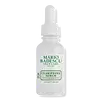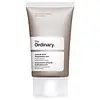What's inside
What's inside
 Key Ingredients
Key Ingredients

 Benefits
Benefits

 Concerns
Concerns

 Ingredients Side-by-side
Ingredients Side-by-side

Water
Skin ConditioningLactobacillus Ferment Lysate
Skin ConditioningGlycerin
HumectantAloe Barbadensis Leaf Juice
Skin ConditioningPotassium Azeloyl Diglycinate
Skin ConditioningHydroxyethyl Acrylate/Sodium Acryloyldimethyl Taurate Copolymer
Emulsion StabilisingAzelaic Acid
BufferingInulin
Skin ConditioningPolyacrylate Crosspolymer-6
Emulsion StabilisingPhenoxyethanol
PreservativeScutellaria Baicalensis Root Extract
AstringentMagnolia Officinalis Bark Extract
AntimicrobialBetaine
HumectantPolysorbate 20
EmulsifyingChlorphenesin
AntimicrobialAlpha-Glucan Oligosaccharide
CleansingCaprylyl Glycol
EmollientAmmonium Acryloyldimethyltaurate/Vp Copolymer
Sodium PCA
HumectantSodium Lactate
BufferingSodium Sulfite
PreservativePCA
HumectantLactic Acid
BufferingHydrolyzed Sodium Hyaluronate
Skin ConditioningSerine
MaskingSodium Benzoate
MaskingAlanine
MaskingSodium Chloride
MaskingGlycine
BufferingPolyglycerin-6
HumectantGlutamic Acid
HumectantLysine Hcl
Skin ConditioningThreonine
Arginine
MaskingPotassium Sorbate
PreservativeOrthosiphon Stamineus Leaf Extract
Skin ConditioningHydroxyacetophenone
AntioxidantProline
Skin Conditioning1,2-Hexanediol
Skin ConditioningCitric Acid
BufferingWater, Lactobacillus Ferment Lysate, Glycerin, Aloe Barbadensis Leaf Juice, Potassium Azeloyl Diglycinate, Hydroxyethyl Acrylate/Sodium Acryloyldimethyl Taurate Copolymer, Azelaic Acid, Inulin, Polyacrylate Crosspolymer-6, Phenoxyethanol, Scutellaria Baicalensis Root Extract, Magnolia Officinalis Bark Extract, Betaine, Polysorbate 20, Chlorphenesin, Alpha-Glucan Oligosaccharide, Caprylyl Glycol, Ammonium Acryloyldimethyltaurate/Vp Copolymer, Sodium PCA, Sodium Lactate, Sodium Sulfite, PCA, Lactic Acid, Hydrolyzed Sodium Hyaluronate, Serine, Sodium Benzoate, Alanine, Sodium Chloride, Glycine, Polyglycerin-6, Glutamic Acid, Lysine Hcl, Threonine, Arginine, Potassium Sorbate, Orthosiphon Stamineus Leaf Extract, Hydroxyacetophenone, Proline, 1,2-Hexanediol, Citric Acid
Water
Skin ConditioningIsodecyl Neopentanoate
EmollientDimethicone
EmollientAzelaic Acid
BufferingDimethicone/Bis-Isobutyl PPG-20 Crosspolymer
EmollientDimethyl Isosorbide
SolventHydroxyethyl Acrylate/Sodium Acryloyldimethyl Taurate Copolymer
Emulsion StabilisingPolysilicone-11
Isohexadecane
EmollientTocopherol
AntioxidantTrisodium Ethylenediamine Disuccinate
Isoceteth-20
EmulsifyingPolysorbate 60
EmulsifyingTriethanolamine
BufferingEthoxydiglycol
HumectantPhenoxyethanol
PreservativeChlorphenesin
AntimicrobialWater, Isodecyl Neopentanoate, Dimethicone, Azelaic Acid, Dimethicone/Bis-Isobutyl PPG-20 Crosspolymer, Dimethyl Isosorbide, Hydroxyethyl Acrylate/Sodium Acryloyldimethyl Taurate Copolymer, Polysilicone-11, Isohexadecane, Tocopherol, Trisodium Ethylenediamine Disuccinate, Isoceteth-20, Polysorbate 60, Triethanolamine, Ethoxydiglycol, Phenoxyethanol, Chlorphenesin
 Reviews
Reviews

Ingredients Explained
These ingredients are found in both products.
Ingredients higher up in an ingredient list are typically present in a larger amount.
Azelaic acid is a multitasker ingredient that helps treat acne, pigmentation, and irritation. It is a great option for sensitive skin.
What makes azelaic special?
The best thing about azelaic acid is it's gentleness. It's generally well-tolerated and safe to use alongside other actives like niacinamide or salicylic acid.
Unlike AHAs, azelaic acid will not make you photosensitive/sun sensitive.
You can find this ingredient naturally occurring in grains like wheat, rye, and barley. In cosmetics, azelaic acid is typically lab-made, which is more stable and effective.
Learn more about Azelaic AcidChlorphenesin is a synthetic preservative. It helps protect a product against bacteria in order to extend shelf life. In most cases, Chlorphenesin is paired with other preservatives such as phenoxyethanol and caprylyl glycol.
Chlorphenesin is a biocide. This means it is able to help fight the microorganisms on our skin. It is also able to fight odor-releasing bacteria.
Chlorphenesin is soluble in both water and glycerin.
Studies show Chlorphenesin is easily absorbed by our skin. You should speak with a skincare professional if you have concerns about using Chlorphenesin.
Learn more about ChlorphenesinThis is a synthetic polymer. It helps improve the texture of products by adding thickness and gel-like feel.
It is also an emulsifer, meaning it prevents ingredients such as oil and water from separating. It also helps evenly disperse other ingredients.
Phenoxyethanol is a preservative that has germicide, antimicrobial, and aromatic properties. Studies show that phenoxyethanol can prevent microbial growth. By itself, it has a scent that is similar to that of a rose.
It's often used in formulations along with Caprylyl Glycol to preserve the shelf life of products.
Water. It's the most common cosmetic ingredient of all. You'll usually see it at the top of ingredient lists, meaning that it makes up the largest part of the product.
So why is it so popular? Water most often acts as a solvent - this means that it helps dissolve other ingredients into the formulation.
You'll also recognize water as that liquid we all need to stay alive. If you see this, drink a glass of water. Stay hydrated!
Learn more about Water